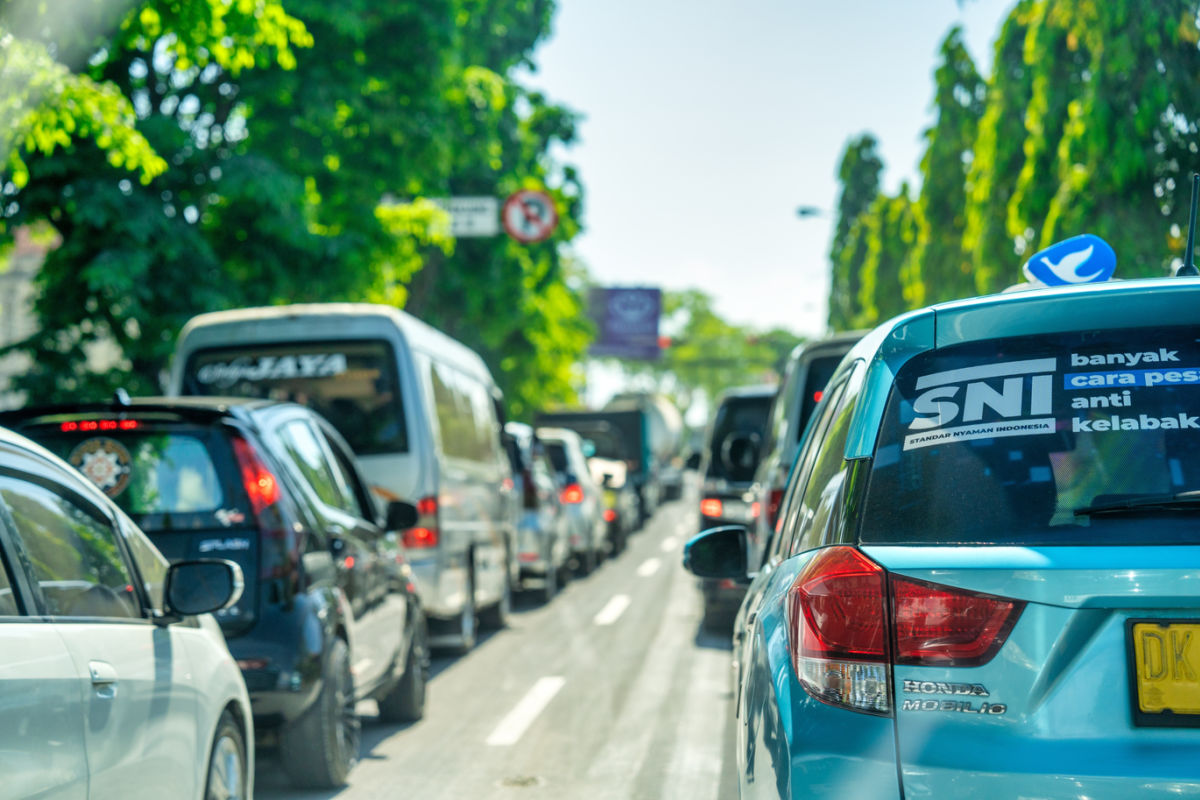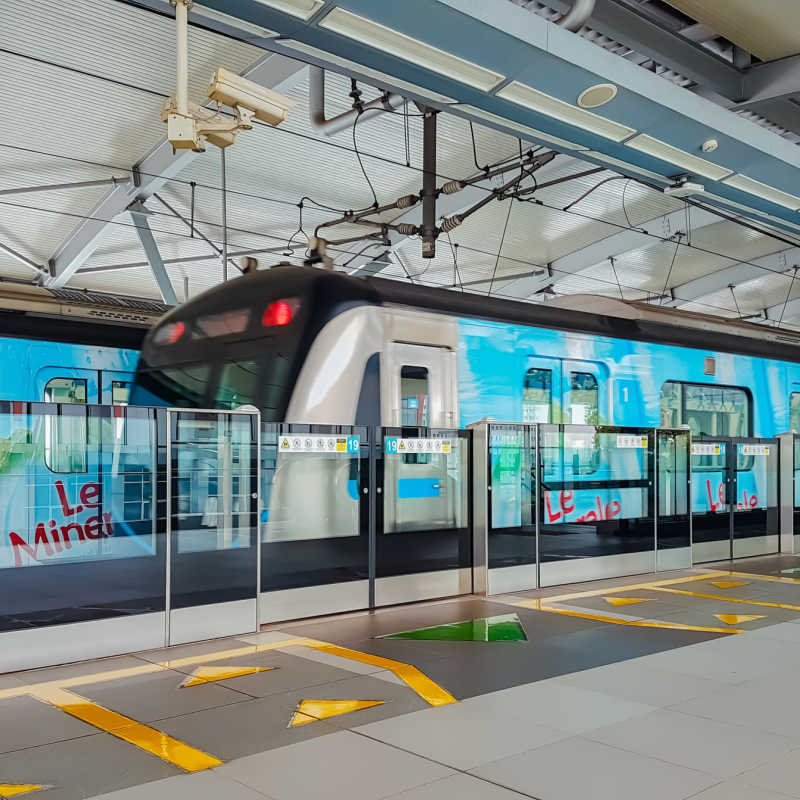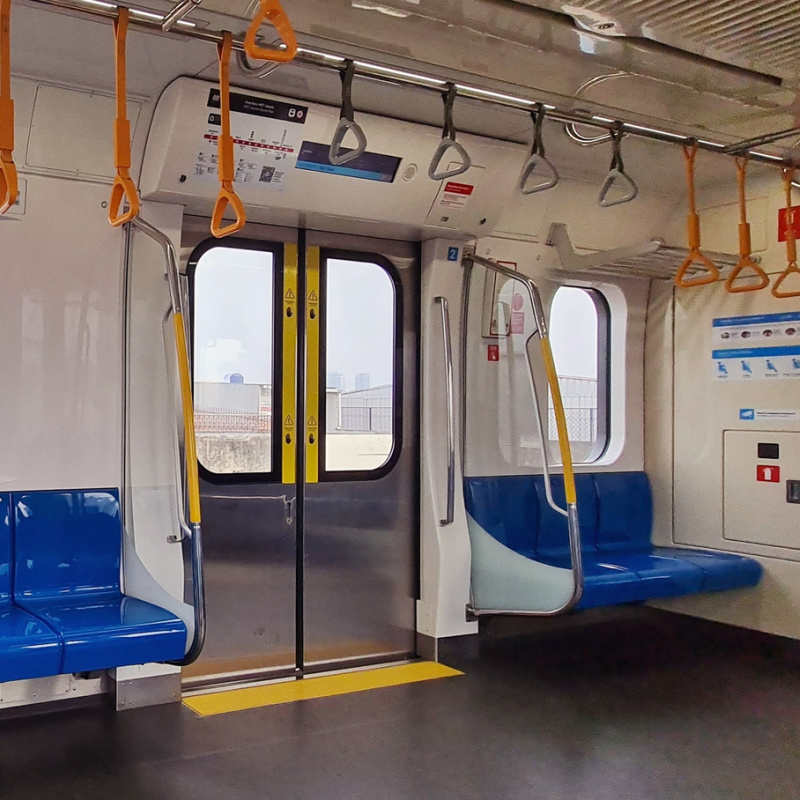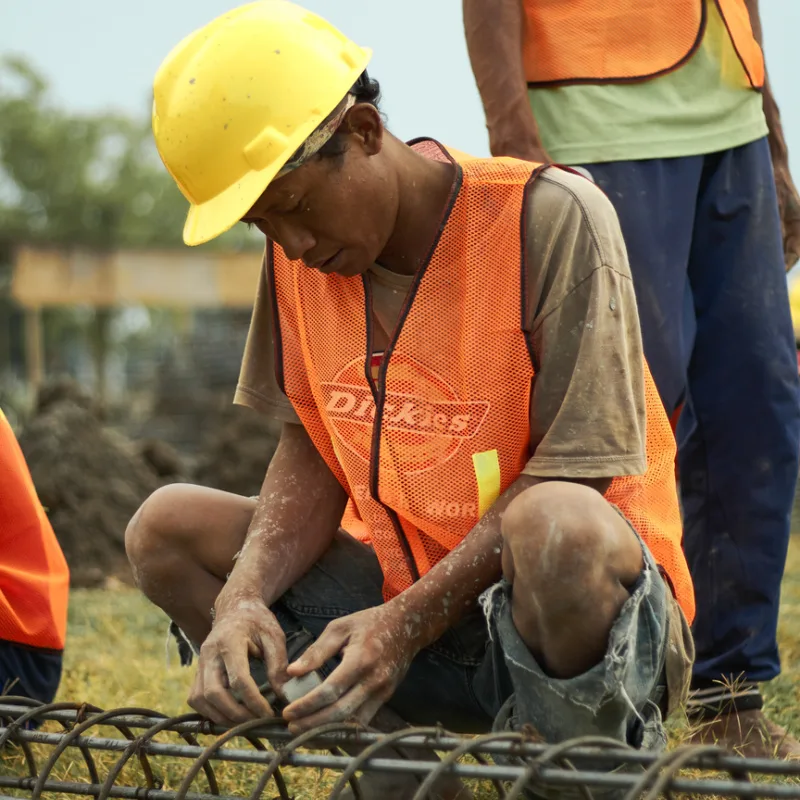More integrated public transport networks could be developed in Bali’s popular tourism resorts. One of the biggest gripes many returning tourists have with Bali as a destination is the lack of public transportation infrastructure, which also affects local residents.
With limited public transport availability, everyone is forced to use their own vehicles or hire taxis, putting huge amounts of pressure on the road network.

Solutions to Bali’s traffic congestion issues are already underway. Earlier this month, work officially started on the new Urban Rail Network.
However, as the first passengers will not step foot into metro carriages until 2031, easier-to-implement solutions are needed in the short term.
The Indonesian Minister for Transportation, Budi Karya Sumadi, has spoken to reporters following a visit to Bali’s Benoa Harbour as part of the 2024 National Transportation Day celebrations.
Minister Sumadi explained that he and his teams are working on an integrated public transportation model for all of Bali.
He explained, “We are talking with the Bali Regional governor, one of which is that we will do a driverless train on the Integrated Highway (LRT). There are already some [investors] from South Korea and China who want to provide loans to the Indonesian government.”
Minister Sumadi touched upon introducing a Buy The Service (BTS) model in Bali, which is a form of a subsidy scheme whereby the government purchases services from public transport companies to fulfil commitments to providing affordable public transport to residents, community members, and tourists.
He explained, “BTS has been done in thirteen cities, but not all of them have responded well. Therefore, I asked the public to respond, especially the mayor.”
Minister Sumadi, when asked about the traffic congestion issues experienced in Kuta specifically, said that the new Bali Urban Rail Network will go a long way in solving the problems long term.
Minister Sumadi explained, “There is indeed a concept: the most congested areas are in the city; we are thinking about Rail Rapid Transit, operating in Kuta so that there are no more vehicles like that.”
He was clear that Bali has the capacity to serve more tourists and more residents once the infrastructure is suitably leveled up.
Minister Sumadi concluded, “The infrastructure in Bali is very capable. Ngurah Rai is functioning well. Now it exceeds the number of 30 million and will be increased to 45 million.”
Minister Sumadi did not give further details about his concept model for an integrated transportation system in Bali.
This is a detailed plan that both residents and frequent tourists to Bali would like to see. Early sketches of maps for the Bali Urban Rail Network lines have circulated online, though details about how these routes will integrate with wider public transpiration networks, such as the prospective tram lines, new toll roads, and increased bus network, have yet to be shared publicly.

Work is now underway for the first phase of the Bali Urban Rail Network, focusing on developing an underground route between Bali’s I Gusti Ngurah Rai International Airport Kuta Central Parking to the beach resort of Seminyak, onward to Canggu’s Berawa and terminating at Cemagi with a total length of 16 kilometers.
In phase two, construction teams will establish a circular route between I Gusti Ngurah Rai, Jimbaran, to central Denpasar, close to Udayana University, referred to as Unud, to Nusa Dua Airport. It will be 13.5 km long, with a possible stop in Sanur, too.

The Indonesian company in charge of the Bali Urban Rail Network is PT Sarana Bali Dwipa Jaya (PT SBDJ).
The President Director of PT SBDJ spoke to reporters following the Ngerauk or traditional laying of the first stone ceremony. Ari explained, “It is expected that phase one and phase two will be fully operational by the end of 2031.”
He noted, “In order to maintain the momentum of high expectations of the Balinese people towards the solution to severe congestion and already above tolerance, we will bring ten Tunnel Boring Machines (TBM) for this project, which is fully funded by PT BIP as a partner investor.”

He confirmed, “This step will ensure that the community still has access to clean water and help prevent groundwater decline and pollution.“
While the project will eventually reduce traffic in key tourism hotspots, tourists have been warned to expect further congestion in areas where contraction teams are working.
Remove All Ads & Unlock All Articles… Sign up for The Bali Sun Premium

Plan Your Bali Holiday:
Book The Best English Speaking Drivers For Airport Transfers & Tours
Choose From Thousands of Bali Hotels, Resorts, and Hostels with Free Cancellation On Most Properties
Book Cheap Flights To Bali
Don’t Forget Travel Insurance That Covers Medical Expenses In Bali
For the latest Bali News & Debate Join our Facebook Community
SUBSCRIBE TO NEW POSTS
Enter your email address to subscribe to The Bali Sun’s latest breaking news, straight to your inbox.
Discover more from The Bali Sun
Subscribe to get the latest posts sent to your email.

Exp
Thursday 19th of September 2024
"Work is now underway for the first phase of the Bali Urban Rail Network."
Really? 1. Bali have no funds. They never do. 2. Central gov. have no funds as they are struggling with debt (Nusantara capital, Gov. connected companies, USD interest rates etc). 3. Private investors would not take the risk without ROI guarantee. 4. It is mentioned China / Korea but that seems far from firm.
So how is it going to be financed then? Looks like groundbreaking done similar to Gilimanuk toll road: No fund secured. Land not secured.
Shorty
Friday 20th of September 2024
@Exp,
According to Bali Discovery News. Dubai has submitted a quote and is prepared to cover up to 75% of the costs. The 4 tunneling machines have been ordered and are due here in April next year to start drilling.
James
Friday 20th of September 2024
@Exp, Did you see the press release of the groundbreaking moment? The photo above the article was a couple of years old, from the groundbreaking at Jakarta. It's mindblowing to me that Bali leaders keep treating the public like they are toddlers who believe anything and everything. Maybe it works for Bali, but by now they should be aware that the general reaction from the outside world is 'yeah, right' at best.
Sam
Thursday 19th of September 2024
Take those annoying illegal fake car transport drivers off the road and supply proper bus systems